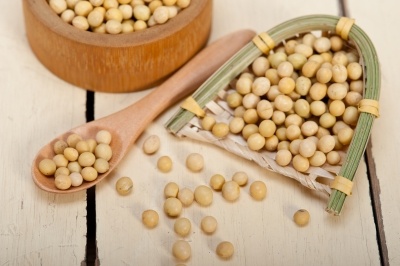
I was asked a few years ago what happened to all the soybean waste that came from both the soya bean processing industry including those industries producing soy milk and tofu. It appears to be rich in waste dietary fibre and apparently China produces 20 million Tonnes of this annually where it usually ends up as animal feed.
The total dietary fibre in soybean residue is about 60% and the soluble component is between 2 and 3%. Conventional extrusion cooking is heat and pressure based using shear forces to generate a range of foods such as flat breads, flours and breakfast cereals. Varying the physical conditions of heat, pressure, shear and food moisture changes the quality of the material generated.
A recent paper from the National Key Lab. of Food Nutrition and Soil Science in Tianjin University of Science & Technology, China, examines a novel technique of blasting extrusion processing (BEP) as a way for releasing soy waste potential. Their proprietary methods improved the recovery of a soluble fibre from 2.6% to 30% using a temperature of 170 C and a screw speed of 150 r/min. The soluble fibre was also shown to have better water solubility, water retention and swelling capacities. Use of differential scanning calorimetry indicated that the peak temperature was higher than a control sample by nearly 8°C. Perhaps the most interesting results related to the improvements in lowering factors associated with hyperlipidaemia and high cholesterol.
Chen, Y., Ye, R., Yin, L., Zhang, N. (2014) Novel blasting extrusion processing improved the physicochemical properties of soluble dietary fiber from soybean residue and in vivo evaluation. J Food Eng. 120 Jan. pp. 1-8
Leave a Reply